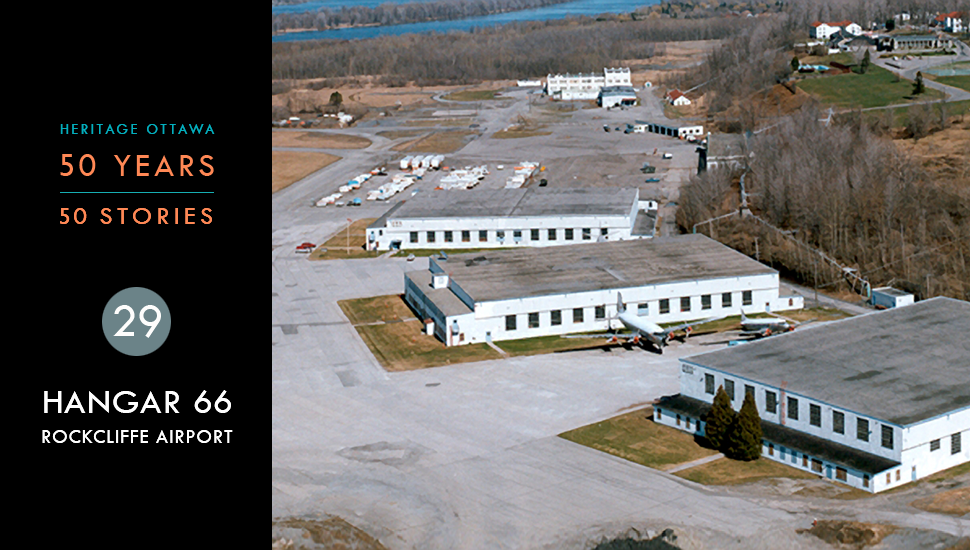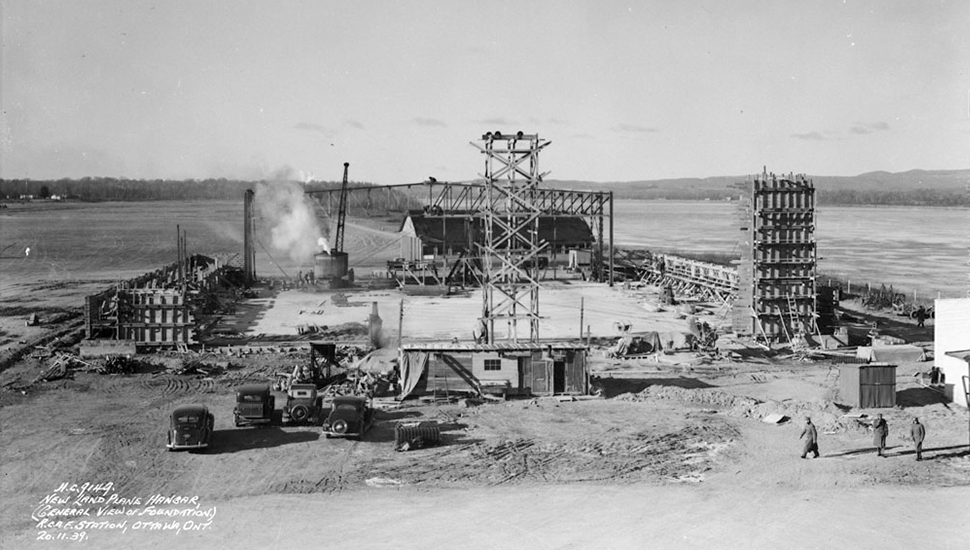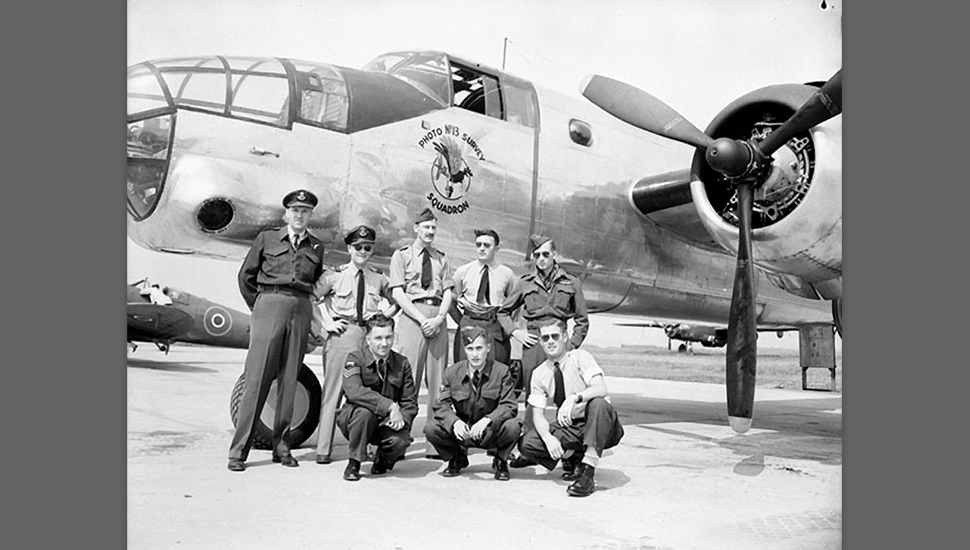29. Hangar 66 | Rockcliffe Airport
Construction: 1940
Demolished: 1989
Design: Joe Tate, Canada Creosoting
Location: RCAF Rockcliffe Air Station (Now Rockcliffe Airport), Ottawa
Hangar 66 was one of three identical double hangars built in 1940 at the RCAF Rockcliffe Air Station to serve the British Commonwealth Air Training Plan (BCATP). They were erected by the Royal Canadian Air Force (RCAF) Directorate of Works and Buildings.
A large, flat-roofed structure measuring 160' x 224' and standing 30' high, Hangar 66 was constructed of timber, not steel — which was needed for the war. The hangar was used for aircraft storage, mechanical equipment and a workshop.
Externally, features characteristic of this building type were its rectangular footprint, flat roofed main structure, and single or two-storey shed-roofed lateral wings extending the length of each side that were integral to the top-hung, horizontal sliding hangar doors. Internally, it was the exposed frame and truss structure that characterized the building, as well as the rigidly braced vertical wood posts and the 112-foot long timber Warren trusses with bolted joints and TECO split-ring connectors.
All three hangars remained in government hands following the end of World War II and the Cold War.
In 1964, after the RCAF ceased active flying from Rockcliffe’s airfield, the three military hangars became home to the newly created National Aeronautical Collection, which amalgamated the aircraft collections of the Canadian War Museum, Royal Canadian Air Force and the National Aviation Museum.
The fate of the Rockcliffe Air Station hangars had likely been sealed in 1956 when the Federal District Commission (predecessor of the National Capital Commission|NCC) began planning construction of the Rockcliffe Parkway (renamed the Sir George-Étienne Cartier Parkway in 2015). First envisioned by noted landscape architect Frederick Todd as part of the Ottawa Improvement Commission's plan of 1903, the scenic Parkway would follow the southern shore the Ottawa River, extend eastward beyond Green’s Creek and link to the Queensway (Highway 417). Construction of the Parkway began in 1960 and proceeded in stages into the late 1970s.
The missing link between the Aviation Parkway and the Rockcliffe Parkway fell directly on the Rockcliffe Air Station lands.
In 1982, funding was announced for a new National Aviation Museum to be located on part of the Rockcliffe airfield. At the same time, the NCC acquired a right-of-way across the airfield lands. Construction of a link between the Aviation and Rockcliffe Parkways began in June 1986. In 1988, the aircraft collections were moved to the new Aviation Museum building, leaving the three World War II-era hangars abandoned and isolated—south of the Parkway and on the NCC's right-of-way.
In September 1988, Heritage Ottawa learned that the Department of Public Works had scheduled the demolition of all three hangars. Heritage Ottawa, the Local Architectural Conservation Advisory Committee (LACAC), the RCAF Association and the Heritage Canada Foundation (HCF) quickly drafted a proposal for the their preservation and continued use.
Heritage Ottawa president Richard Cannings wrote to NCC Chair Jean Piggott suggesting that a slight rerouting of the roadway would allow Hangar 66, “in the best condition” of the three, to be saved and repurposed.
The NCC Chair argued that the hangar was a fire hazard, that it interfered with the alignment of the Parkway, and was of no use to the federal government.
In May 1989, HCF announced that Elmer MacKay, Minister of Public Works, was planning to review the NCC's decision to demolish the hangars, including Hangar 66—by now a municipally-designated structure under the Ontario Heritage Act.
Heritage Ottawa, LACAC, HCF, the RCAF Association, the Canadian Fighter Pilots Association, The War Amps, the Royal Canadian Legion, the Billy Bishop Museum and the Red River Tiger Moths Flying Club all continued to press for the preservation of Hangar 66.
Heritage Ottawa was well on its way to organizing a demonstration by 200 World War II RCAF veterans from across Eastern Ontario to mark the 50th anniversary of the BCATP on December 17, 1989, when it learned the NCC had stripped the hangars of their asbestos shingles. Complete demolition of all three hangars followed shortly.
An expanded Canadian Aviation and Space Museum continues to operate at the Rockcliffe Airport site, under direction of the Canada Science and Technology Museums Corporation.





